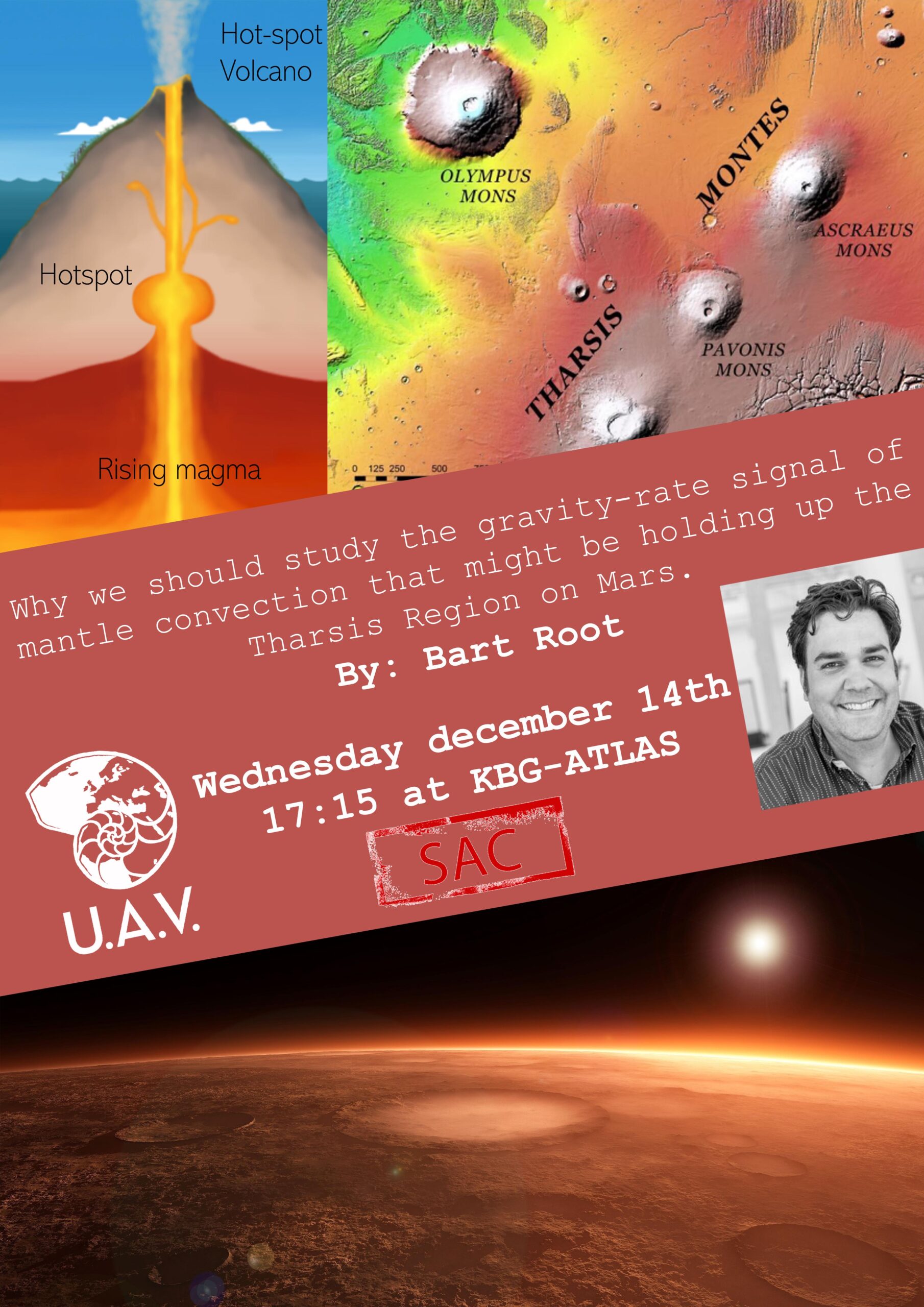Dear members,
Wednesday december the 14th Bart Root will give a lecture about the Tharsis Region on Mars. The lecture will be held 17.15-18.15 in KBG-ATLAS. You can use this talk for your master portfolio and you will also earn a SAC point!
Why we should study the gravity-rate signal of mantle convection that might be holding up the Tharsis Region on Mars.
Keywords: Comparative planetology, Geodynamics, geophysics & geodesy.
Aside from the so-called Martian dichotomy, one of the most striking features of the Martian surface is the Tharsis Region: a vast volcanic plateau near the equator, harbouring the largest volcanoes in our solar system. Tharsis is about 5000 km across and 7 km high. It is thought to overlie a hot spot, not unlike the one below the Hawaiian islands, which can bring vast quantities of magma in the crust and at the surface. With the latest NASA space mission Insight, we have new ideas about the interior of the red planet. However, there remains uncertainty about the nature of Tharsis, with two main competing hypothesis: 1) the bulge is mainly the product of uplifting due to the positive buoyancy of the mantle plume underneath; 2) it is a large static mass of volcanic material sitting atop the supporting lithosphere. Satellite gravity field observations might be able to answer this decade old problem.
In order to study this question, we have developed numerical models to study this phenomeno. The first one is an axisymmetric Stokes solver which computes the stress generated at the surface by a spherical object (positively or negatively buoyant) placed in the mantle. This stress pattern is then read by the second code who converts it to dynamic topography. The dynamic topography and the internal mantle densities are forward modelled into a gravity signal. With the computed velocities the internal densities are projected 50 years into the future. This new model is also forward modelled into a gravity field. Then, both gravity fields are subtracted from each other and divided by the 50 years to generate gravity-rate results. This planet-scale change in gravity rate could be detected by all orbiting satellites from the last 4 decades. Newer dedicated gravity missions to Mars are now developed as well to probe the interior of this fascinating planet.
Kind regards,
The 78th board of the Utrecht Earth Sciences Association

